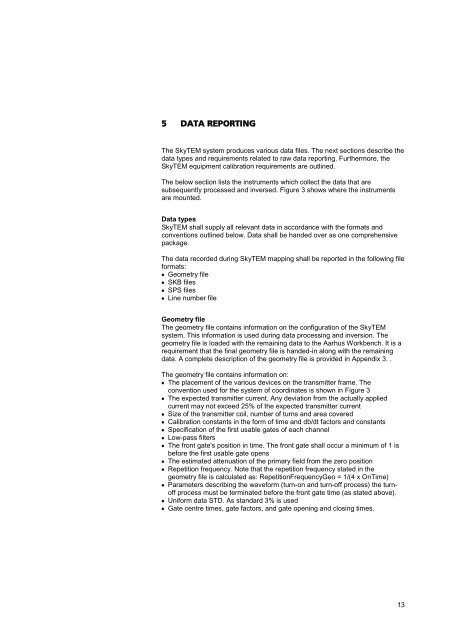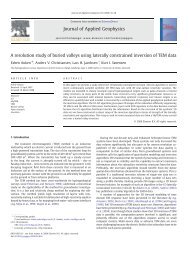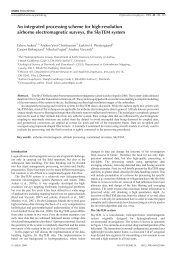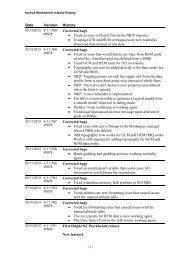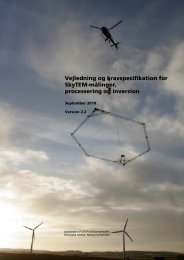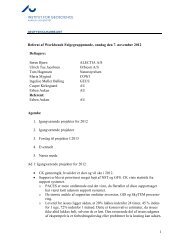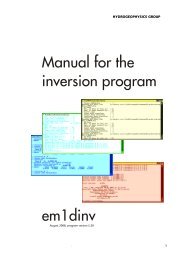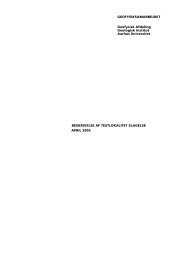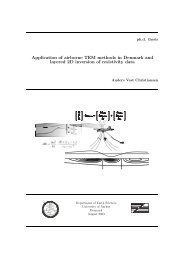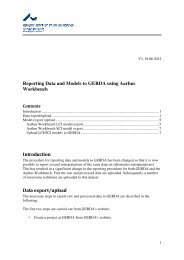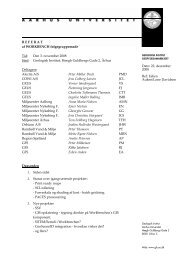guideline and standards for skytem measurements, processing and ...
guideline and standards for skytem measurements, processing and ...
guideline and standards for skytem measurements, processing and ...
Create successful ePaper yourself
Turn your PDF publications into a flip-book with our unique Google optimized e-Paper software.
5 DATA REPORTING<br />
The SkyTEM system produces various data files. The next sections describe the<br />
data types <strong>and</strong> requirements related to raw data reporting. Furthermore, the<br />
SkyTEM equipment calibration requirements are outlined.<br />
The below section lists the instruments which collect the data that are<br />
subsequently processed <strong>and</strong> inversed. Figure 3 shows where the instruments<br />
are mounted.<br />
Data types<br />
SkyTEM shall supply all relevant data in accordance with the <strong>for</strong>mats <strong>and</strong><br />
conventions outlined below. Data shall be h<strong>and</strong>ed over as one comprehensive<br />
package.<br />
The data recorded during SkyTEM mapping shall be reported in the following file<br />
<strong>for</strong>mats:<br />
Geometry file<br />
SKB files<br />
SPS files<br />
Line number file<br />
Geometry file<br />
The geometry file contains in<strong>for</strong>mation on the configuration of the SkyTEM<br />
system. This in<strong>for</strong>mation is used during data <strong>processing</strong> <strong>and</strong> inversion. The<br />
geometry file is loaded with the remaining data to the Aarhus Workbench. It is a<br />
requirement that the final geometry file is h<strong>and</strong>ed-in along with the remaining<br />
data. A complete description of the geometry file is provided in Appendix 3. .<br />
The geometry file contains in<strong>for</strong>mation on:<br />
The placement of the various devices on the transmitter frame. The<br />
convention used <strong>for</strong> the system of coordinates is shown in Figure 3<br />
The expected transmitter current. Any deviation from the actually applied<br />
current may not exceed 25% of the expected transmitter current<br />
Size of the transmitter coil, number of turns <strong>and</strong> area covered<br />
Calibration constants in the <strong>for</strong>m of time <strong>and</strong> db/dt factors <strong>and</strong> constants<br />
Specification of the first usable gates of each channel<br />
Low-pass filters<br />
The front gate's position in time. The front gate shall occur a minimum of 1 ìs<br />
be<strong>for</strong>e the first usable gate opens<br />
The estimated attenuation of the primary field from the zero position<br />
Repetition frequency. Note that the repetition frequency stated in the<br />
geometry file is calculated as: RepetitionFrequencyGeo = 1/(4 x OnTime)<br />
Parameters describing the wave<strong>for</strong>m (turn-on <strong>and</strong> turn-off process) the turnoff<br />
process must be terminated be<strong>for</strong>e the front gate time (as stated above).<br />
Uni<strong>for</strong>m data STD. As st<strong>and</strong>ard 3% is used<br />
Gate centre times, gate factors, <strong>and</strong> gate opening <strong>and</strong> closing times.<br />
13


